Summary of modeling classes in middle group
"Wintering Birds"
Educator: Pypina N.V.
2016
Tasks:To form interest in working with plasticine, develop fine motor skills, attention, speech, imagination,
creativity, develop aesthetic perception.
Learn to sculpt a bird in a constructive way, observing the location and ratio of body parts, connect the parts,
pressing them against each other.
Continue learning how to use the stack.
Cultivate independence, perseverance, accuracy.
Systematize children's knowledge about wintering birds.
Exercise children in counting within 5. Learn to answer the question “How much? »
Integration educational areas: knowledge, communication, socialization, music, safety.
Preliminary work:
Conversation about wintering birds (titmouse, bullfinch, sparrow);
Examination of the illustrations "Birds"
Reading stories about wintering birds (“Sparrow and Fox” Bulgarian fairy tale, “Nimble tit jumping” A. Barto, “Bullfinches” A. Prokofiev, “Tit” Yugoslav song, “Sparrow” E. Charushin)
Riddles.
Bird watching on a walk.
Material:
Scenery of the winter forest, images (stencils) of birds (tits, bullfinches, sparrows, plasticine (brown and gray), napkins, stacks and planks) according to the number of children, buckwheat and sunflower seed (for decorating the eyes and beak of a sparrow), feeder.
Musical arrangement: Sounds of nature. (Birds. Noise of the forest), sound (Magic), “A. Vivaldi "The Seasons. "Winter".
Lesson progress:
Educator:Today we have guests. They want to see how you've grown, what you've learned. But first you need to greet the guests. (Children greet guests in chorus). Look at each other, smile, and prepare to listen carefully.
Educator:Guys, do you like to walk?
Children: Yes.
Educator:Tell me guys, where do you like to walk?
Answers of children (on the street, in kindergarten, at the rink, etc.)
Educator:Today I invite you for a walk in the winter forest. But before heading into the winter forest, what do you think we need to do?
Children:Put on warm clothes.
We put on imaginary mittens, a hat, a fur coat.
Educator:
I invite you to go for a walk in the winter forest,
More interesting adventures, we guys can not find.
Stand one after another, hold hands tightly.
Along the paths, along the paths, we are not in a hurry, we do not lag behind
We will all go to the forest together.
(Children hold hands and follow the teacher with a “snake”)
Educator:Guys, look how beautiful it is in the forest! How much snow! Look what a beautiful Christmas tree!
We approach the Christmas tree, we admire.
Educator:Guys, look who is sitting on the Christmas tree?
Children: Titmouse.
Educator: What are they?
Children:Beautiful, small, yellow-breasted, etc.
Educator:Let's count how many titmouses sit on a Christmas tree branch.
Children count (four titmouse).
Educator:Guys, what do you think birds do in the forest in winter?
Children:They play, have fun, get their own food, etc.
We approach the next Christmas tree, Bullfinches are sitting on a branch.
Educator:Guys, look who is sitting on the branches of this Christmas tree?
Children: Bullfinches.
Educator: What are they?
Children's answers.
Educator:How many bullfinches sit on the top branches? (two bullfinches)
How many bullfinches sit on the lower branches? (three bullfinches)
How many bullfinches are on the Christmas tree? (five bullfinches).
Educator:Tell me, guys, the birds that do not fly away in winter to warm lands, but stay with us for the winter, what are they called?
Children: Wintering birds.
We approach the next Christmas tree (one sparrow sits on the Christmas tree)
Educator:Look, guys, who is sitting on a branch?
Tell me what he is.
Children's answers(small, gray, mottled, black eyes).
Educator:Guys, it seems to me that the sparrow is sad. Why do you think?
Children's answers(he is cold, bored alone on the Christmas tree, he has no friends).
Educator:Guys, how can you help a little sparrow?
Children's answers.
Educator:And let's go back to Kindergarten and blind him friends.
Hold hands tightly along the paths, along the paths
We are not in a hurry, we are not lagging behind in kindergarten, we will all go together.
We pass to the table, take off imaginary clothes.
Let's go and sit down at the table.
Educator:Look, I have a friend for our sparrow.
Let's see what it is
Children's answers:Small, motley, gray, small round head, oval body, wings, tail, beak, eyes.
Educator:Do you want to make friends for our sparrow?
Children's answers:
Showing how to sculpt a sparrow:
- We take plasticine and divide it into two parts, one part is larger (for the body), the other is smaller (for the head)
- We take a smaller piece and roll the ball between the palms in a circular motion (we get the head of a bird)
- We sculpt the body of a bird. We take a larger piece, first we roll the ball between the palms in a circular motion, then lightly press down. To make the body slightly rounded or oval.
- We connect the parts, the head is slightly smoothed to hold firmly.
- We pull the tail and pinch it slightly.
- Pulling and pinching the wings
- We make a beak from a sunflower seed and eyes from buckwheat.
- We make feathers with a stack.
(children sculpt friends for a sparrow to the music)
Outcome:Guys, what a good deed we did today?
Children's answers:Blinded friends (birds) for a sparrow
Educator:Look guys what I have (feeder)
What is a feeder for?
Children's answers:(canteen for birds)
Educator:Come on, guys, put the sparrows in the feeder.
Well done guys wonderful sparrows turned out for everyone. Now the sparrow will not be bored, you have made many new friends for him. Today, when we go for a walk, we will take bird food with us and feed the sparrows and other birds that fly to the feeders.

For technical reasons, we did not sculpt sparrows, but bullfinches. And to be honest, they turned out great.
Tasks. To teach children to sculpt birds in a constructive way from 4-5 parts, different in shape and size, using additional materials (matches for legs; buttons for eyes, seeds for beaks). Show the possibility of obtaining a more expressive color by mixing two original colors. Direct to an independent search for ways to convey the movement of a stucco figurine (the head is lowered down, the wings are raised). Develop a sense of form, the ability to compose.
Preliminary work. Bird watching on a walk in the park. Examination of images of birds (sparrow, titmouse, bullfinch, crow, magpie, etc.).
Materials, tools, equipment. Pictures with images of sparrows. Brown and gray plasticine, stacks, seeds for beaks, matches (cocktail tubes) for legs, paper and cloth napkins; "feeding troughs" as the basis for collective compositions: 2-3 covers from cardboard boxes(different sizes, with low sides) with ropes or braid for hanging.
On the silver path.
Only the New Year will come.
On a high thin leg
The miracle tree is up.
This tree is not simple.
And it's not for kids.
Flying near the Christmas tree
The birds whistle cheerfully.
There is a woodpecker and tits.
Bullfinches and a sparrow
Everyone wants to have some fun
Near your Christmas tree!
Toys do not shine on her
And the star does not shine.
But bird feeders
We hung there!
The teacher reminds the children about how they watched the birds on the feeder while walking and fed them with seeds, cereals, bread crumbs. Then he shows 2-3 feeders prepared in advance from cardboard boxes (lids with low sides) with ropes for hanging and suggests making sparrows. Shows pictures of sparrows and asks to tell what they look like (small, the body is round, the head is small and also round, the wings are small, the tail is elongated, the feathers are brown and gray, the beak is short, the eyes are small, round). Shows how to sculpt a sparrow in a constructive way:
We take pieces of brown and gray plasticine, mix them into one lump to get a color similar to the color of sparrow feathers (the teacher again draws the children's attention to the images of sparrows);
We divide the brown-gray lump in half and one half in half again, so that we get 3 pieces in total - one large and two smaller ones;
From a large piece we sculpt a torso in the shape of an egg and pull the tail from behind, flatten it with our fingers to make a sparrow's tail;
We have two identical pieces of plasticine left, from one we will make a head and a footrest, and from the second - wings; ^^
We divide this piece into a head and a footrest; we roll a round head, attach it to the body (shows the place of attachment); for the legs we take a match, break it in half, insert it into the lower part of the body (tummy) and strengthen it on a flat cake stand;
We do the wings like this: roll out the ball, flatten it, cut it in half with a cut - we get two identical wings, attach them to the sides of the body;
We check whether our little sparrow will stand on its legs (the teacher checks the stability of the craft);
We decorate the sparrow's head: we make the beak from yellow plasticine or simply insert a seed - one if the beak is closed, and two if the beak is open; round eyes will turn out well from small plasticine balls;
The sparrow is ready and can fly to the feeder.
The teacher in a playful way shows the children the possibilities of transferring the movement of the figurine: raises the wings and shows that the sparrow flies to the feeder, sits on it (the wings fall) and begins to peck the grains (lowers its head down).
Children choose the material, begin to sculpt sparrows and, as they are made, they transfer them to the feeders.
Follow-up work. Children complement the compositions "Sparrows on the feeder" at will.
Artem K. Dasha K
tatiana strokova
"Bird". Outline of a lesson in activity (modelling) in the middle group
Outline of modeling classes in the middle group on the topic« birdie»
Teacher Strokova Tatyana Valerievna
GBOU kindergarten №1672
Moscow, 2014
Software content. Teaching children to sculpt with clay birdie, convey the oval shape of the body, round head. Learn to pull the tail, pinch the beak. Continue to learn how to divide plasticine into pieces, use a stack. Learn to note the diversity of the resulting images.
Cultivate accuracy, independence, develop memory, attention, imagination.
Material: plasticine, plank, stacks.
visual material: sculptural bird, image of a bird.
vocabulary work: head, tail, circle, oval, eyes, beak, pull, pinch, stack.
Preliminary work. Reading a fairy tale birdie.
Course progress.
The teacher makes a riddle.
Everyone knows this bird
It does not fly away to a warm region. This bird is all year round. Lives in our yard. And she chirps
Loud in the morning:
Wake up quickly. -
Everyone is in a hurry.
Who is it? (sparrow) Correctly.
Knock on the door. "Arrives" birdie. The teacher, together with the children, is examining a sculpture of a small form of a bird.
Such a beauty the bird flew to us! Let's make one like this birdie. But first, let's take a closer look at it. What do you have birdies? (torso, head, beak, tail, wings). What shape is the body birdies? (circling gesture) (Oval like an egg).
What shape is the head? (round). What does it look like? (per ball). What part of the body is the head in? birdies? (at the beginning of the body).
What bird tail? (long, prima). See what you have birds are on the head? (eyes, beak).
How many eyes does birdies? (two). How many wings? (two)
And now I'll show you how to sculpt birdie. Watch carefully and remember. I will divide the lump of plasticine in half, put one part, and divide the other in half again. How many lumps did (three).From the largest piece I will sculpt the body. What shape is it (oval) Show how to sculpt an oval shape (children show).
Yes, you need to roll the clay straight movements: back and forth (I sculpt the body). On one side of the body there will be a head, and on the other what? (tail).
I'll pull the plasticine with my fingers, like this (showing). Now I will sculpt the head. (head bead). How will you sculpt the head, show with your hands.
That's right, we will roll the lump in a circular motion. What needs to be done to make it work birdie? Correctly. Let's connect two parts: body and head, press firmly, press with fingers (showing).It is necessary to apply carefully so that it turns out smooth, beautiful. Now pinch the beak in the front, being careful not to ruin the head, like this (show): with two fingers on top and bottom, and now also on the side.
Think and tell me how we will make eyes, wings? (draw with a stack)
Yes, with the end of the stack we will draw eyes on one side and on the other, and wings, feathers with the other end (show).
To our the bird was sitting, fashion instead of legs stand: from the 3rd small piece and roll up a column, flatten it and put it on it birdie, press firmly and press. So it turned out birdie. I will remind the children about the careful use of plasticine, I specify the sequence modeling, give instructions to start sculpting.
Individual work with children: I will help individual children to divide the clay into 3 parts, I will remember with him the ways oval sculpting, ball, exercise children in pulling and pinching (show on your piece) I will praise independent, neat children, once again I will show the technique of smoothing the surface of an object.
Analysis of children's work. Children put their work on the board. I will gather the children around the table, on which there is a board with the children's work, I will consider them: lot you blinded the birds! Now our mother birds many baby birds, All of them various: big and small. Look, this the bird tilted its head looking for grains. And this what does the bird do? (I pay attention to the expressiveness of the images). What kind the most beautiful birds, the smoothest? Similar birds on mother bird. I will give a positive assessment of the work of children. At the end lessons I will sing a song with the children about birdie.
GCD on modeling "Bird" (middle group)Purpose: To consolidate in children the skill of sculpting a bird from plasticine, conveying the oval shape of the body, pulling and pinching small parts; beak, tail. To form the skill to note the diversity of the resulting images, to enjoy them.
Course progress.
Children stand in a circle. Finger game "I want to build a house"
Enable recording "chirping birds"
Educator: Oh, do you hear guys? Who is chirping?
Children: bird!
A bird feeder is brought in.
Educator: Guys, let's say hello to the bird.
Children: Hello, bird!
Bird: Hello guys. (sad)
Educator: Birdie, why are you so sad?
Bird: There are so many of you, you are so cheerful, friendly, and I'm sad because I'm alone and I have no friends.
The teacher turns to the children: Guys, how can we help the bird?
Children: Make friends for birdies.
Teacher: How can we do this?
Children: Glue, draw, mold.
Educator: Yes, we can glue, draw, but today we will sculpt. So that we can do it well guys, let's look at our bird.
The teacher asks questions to the children.
Educator: What does the bird have?
Children: Torso (it is oval)
Children: The head, it is round, is in front.
Children: Beak, tail (he is behind)
Educator: Here we have examined our bird.
Show me your pen.
Teacher: What are we going to do?
Children: Bird! (bend the little finger).
Teacher: What material?
Children: From plasticine. (bend the ring finger)
Teacher: With what tool?
Children: Using the board. (bend middle finger)
Teacher: How are we going to do it?
Children: Everything is in order, and we get this result. (Bend the index finger and show the thumb)
Educator: To get such a result, come to my table.
On the table lie on a tray a ball and an oval molded in advance.
Educator: Guys, look, I have a ball, how to sculpt it, show me the guys in the air. And there is also an oval, show us how we sculpt it.
And now we need to connect the body of the bird and the head. How are we going to do it? (lubricate). In front of the head we will make a beak (pull out).
And behind the tail (stretch and flatten).
Here we have a bird!
The teacher invites the children to go to their workplace and cover it. After the children covered their workplace, the guys go for the chairs.
Educator: Guys, where do we start work?
Children: Divide the plasticine into 2 parts. From the larger one we will make the body, and from the small one we will make the head.
For those children who completed the work faster than the others, the teacher gives additional plasticine and invites the children to make seeds for the birds.
After the work is completed, the birds are carried to the craft stand.
The analysis of finished works is carried out.
Educator: Guys, what great fellows you all are, what beautiful birds you blinded. Oh, look, how happy our bird is!
Bird: (joyfully) Thanks guys! How many friends I have now, they are all beautiful. I'm glad guys! Thank you!
The guys carry the chairs and then clean their workplace in reverse order.
Synopsis of GCD on modeling "Birds have arrived"
Purpose: to consolidate children's knowledge of the characteristic features of birds; creating a three-dimensional image of a bird; convey in modeling the characteristic features of birds, the ratio of parts in size, shape; use familiar modeling techniques: rolling, pulling, to cultivate a caring attitude towards birds.
Course progress.
Spring has come. Feeding troughs in city parks are often full. For birds, people carry seeds. Feeding troughs are not empty even in summer. It's hard to be the first migratory birds. They fly joyful - it's time to build nests, and breed offspring. And sometimes the weather does not indulge. It will either zavyuzhit, then it will overwhelm, then it will get colder significantly. Starlings, rooks, larks, finches, robins, linnets are one of the first to come to us in spring. Today we saw a lot of birds that flew to the feeder on our site. Let's remember who we saw. And they can also fly: magpie, crow, bullfinch.
View presentation "Birds"
The game "Guess the riddle" (showing birds in a presentation, name wintering or migratory)
1. Here is the white-sided woman, and her name is.
(Magpie is a wintering bird)
2. Chick - chirp!
Jump to the grains!
Peck, don't be shy
Who is this ... (Sparrow is a wintering bird)
3. Black, agile shouts "Krak",
Worms are the enemy. (Rook is a migratory bird)
4. Who sat down on a fat bough
And knocks "Knock-knock, knock-knock"? (Woodpecker. Winters)
5. In winter, apples are on the branches,
Collect them quickly!
And suddenly the apples fluttered
After all, this is ... (Bullfinches are wintering birds)
6. Comes to us with warmth,
The path has been long.
Sculpts a house above the window
From grass and clay. (Swallow is a migratory bird)
Birds are our little neighbors. Noisy, funny, melodious, multi-colored, funny, smart, domestic and urban ... So different and so funny.
Have you noticed that all the riddles are about birds? And probably guessed that today we will sculpt birds.
So the birds have: a body, a neck, a head, a beak on the head, a tail, wings, paws. (children sculpt together with the teacher) We take a piece of plasticine and divide it into two parts. We put one piece on the plank, this will be the body, and divide the second into two more identical halves, from one half we will make the head, and from the second as legs. We take a large piece of plasticine and begin to make the body, roll it into a thick sausage, now we pull the neck out of the body on one side, and on the other side the tail. Now we take a small piece of plasticine and roll out the head and draw out the beak. Now we attach the head to the neck, using the lubrication method. We take the last piece of plasticine and make legs, also roll it out, in a circular motion. We rolled it out, we got a small oval, and we put our bird on it, it's like our legs. So we blinded a bird, but what is missing from our bird? Let's draw her wings and eyes with a stack. Here are the birds we got.
Do you want to play the game "Birds fly". You will all be birds, and I will say words, and you will scatter at the word “Ai” ... Birds sit, peck grains and fly away.
The bird sat on the window:
Sit with us for a while
Sit down, don't fly away.
The bird flew away - "Ay! » (the game is repeated 2-3 times)
Invite the children to put the birds on the feeder and feed them.
Feed the birds in winter.
Let from all over
They will flock to you, like home,
Stakes on the porch.
Their food is not rich.
Need a handful of grain
One handful -
And not scary
They will have winter.
How many of them die - do not count,
It's hard to see.
But in our heart there is
And the birds are warm.
Is it possible to forget:
Could fly away
And stayed for the winter
Along with people.
Train the birds in the cold
To your window
So that without songs it was not necessary
We welcome spring.
Analysis of children's work.
Chistova Anna Nikolaevna

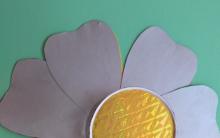
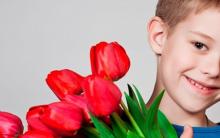
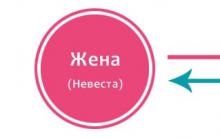
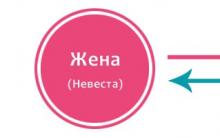
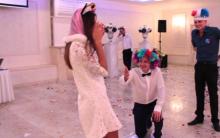
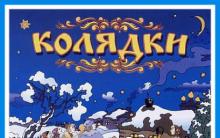




How to make a bird costume with your own hands Carnival bird costume
Scenario for 25 years girl cool houses
Examples of serious nominations for rewarding employees
The script for the anniversary of the girl (young woman) "A star named ...
Comic nominations for a corporate party